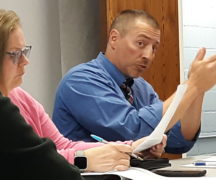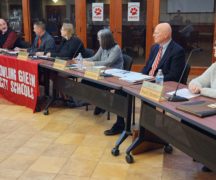By JAN LARSON McLAUGHLN
BG Independent News
There were accusations of dishonesty, finger pointing, police officers on hand, and pleas for civility at the Bowling Green Board of Education meeting Tuesday evening.
Instead of sitting by quietly, the school board and community members defended the decision to build one community elementary school.
The Bowling Green district is asking voters in November to approve a combination income/property tax to build a new elementary school. The issue on the ballot will be a 0.25 percent income tax, and 1.6-mill property tax – generating $20 million each over 30 years.
During the two-hour meeting Tuesday evening, the following issues were discussed.
What exactly did the task force recommend?
Opponents of the bond issue have said the plan for one elementary school went against the recommendation of a citizen task force. Supporters of the bond issue have said that the majority of the task force supported one elementary, but agreed that sticking with three elementaries may be easier to get voter approval.
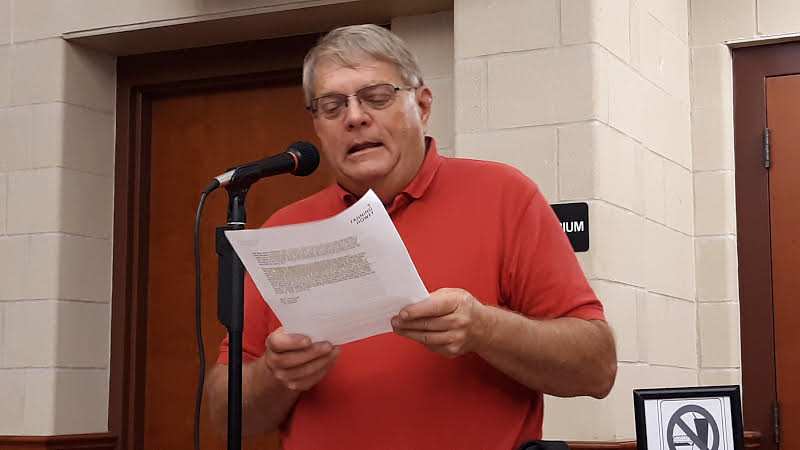
On Tuesday, Ken Rieman, presented a letter from the architectural firm that led the facilities task force. The letter explained that while the board had the right to go with any proposal it wished, that the majority of the task force wanted a consolidated elementary.
The architects said that asking task force members what others in the community might support was an exercise that “did not represent a recommendation of the task force.” The process was “perhaps flawed,” asking the task force to vote on behalf of the community – not based on their beliefs, the letter stated.
The process also did not take into consideration that the financial task force was recommending a joint income tax-property tax issue, which was more palatable to many voters, the letter said.
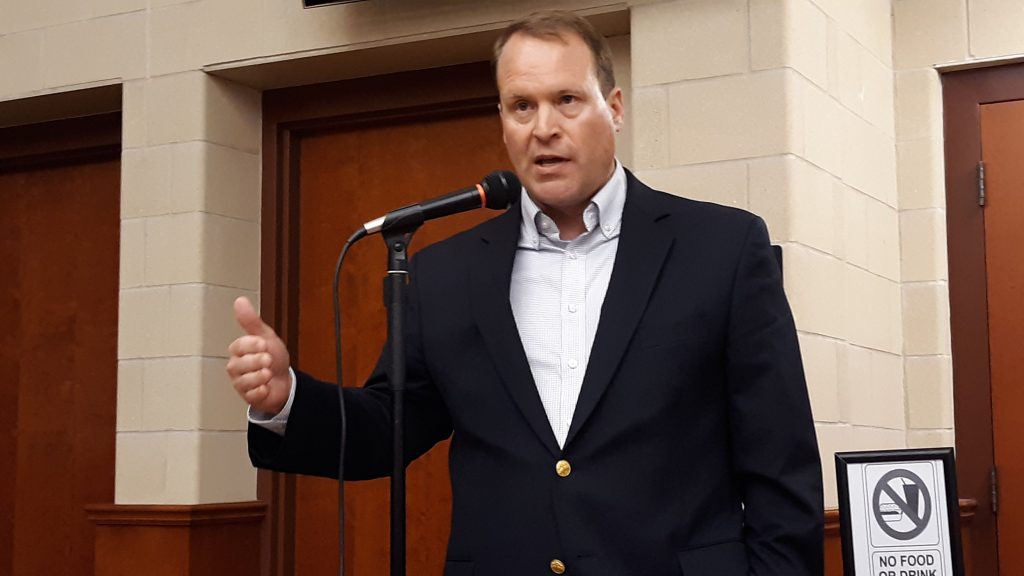
Ben Otley said the financial task force made the recommendation to split the bond issue to put less burden on agriculture and large landowners.
“They followed exactly what our financial task force asked them to do,” Otley said.
Accusations of lack of transparency disputed
Board Treasurer Cathy Schuller defended her response to requests for public records. During the last board meeting, Grant Chamberlain criticized the lack of transparency from the school district and said he had met resistance at every turn.
“We have always been transparent,” Schuller said, voicing her belief that district dollars are taxpayers’ money.
Schuller said she has not denied any clear requests for public records.
She has received 58 requests – the majority from five people. Gathering that information has taken 335 hours of work, costing the taxpayers $16,898. The amount paid by those requesting the records has been $123.
Schuller said there have been some requests that she has asked for further information on, since they were too broad or ambiguous. School districts may deny those type of requests, but she has tried to get more specifics to narrow the searches, she said.
“I take public record requests very seriously,” she said.
The only request she hasn’t fulfilled was one submitted on Monday.
One request for information was fulfilled in March for Grant Chamberlain, who was emailed that it was ready for pickup, but he failed to retrieve it. He has yet to pay the $2 charge for the records that took seven hours to gather, Schuller said.
The treasurer also said the district is looking at joining the state’s “checkbook” which would make information on the district’s spending easily accessible to the public.
“It’s a way for anyone in the public to see all our expenditures,” Schuller said.
Questions about one community elementary
Superintendent Francis Scruci acknowledged that he has heard concerns in the community about moving from the three smaller “neighborhood” buildings to one elementary. He and others from the district went to Defiance to visit the one community elementary there.
That school has 1,200 kindergarten through fifth grade students, which is similar to Bowling Green’s current K-5 enrollment of 1,235. As is planned in Bowling Green, Defiance has a “school within a school concept.”
Since Defiance opened its new elementary in 2009, the number of struggling students has dropped from 33 to 17 percent. The district attributes that success to the pooling of resources under one roof, Scruci said.
Scruci said he has heard concerns about children being lost in the big school. But instead, Defiance is seeing “wonderful collaboration,” and more community spirit. The students were quiet in the hallways and engaged in the classrooms, he said. And the district reported seeing a cost savings of operating one elementary rather than four.
If the teachers are good, do the buildings really matter?
Linda Lander, an educator and member of the facilities task force, encouraged community members to take tours of the elementary schools, two of which were built in 1953.
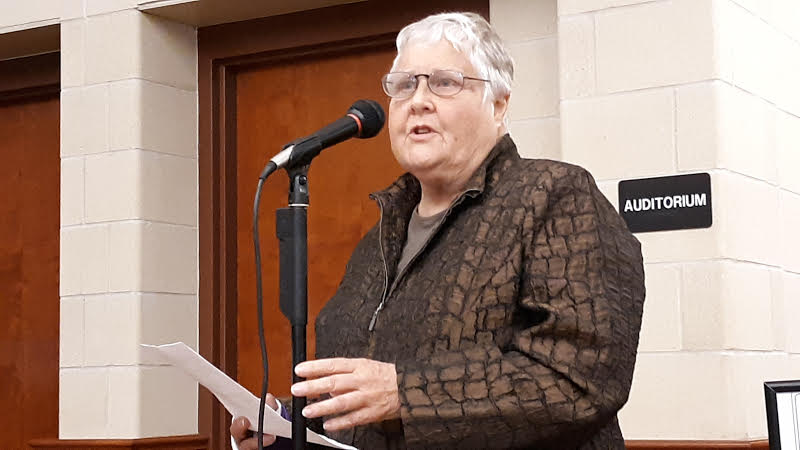
“Seeing is believing,” she said.
“This community has an obligation to provide new facilities,” Lander said, stressing that it is “a moral imperative” that this generation pays for the education of the next.
“This is all about education and this is all about students,” she said.
Another citizen, Steven Goyer, said he favors one new elementary to better deal with overcrowding and provide better facilities.
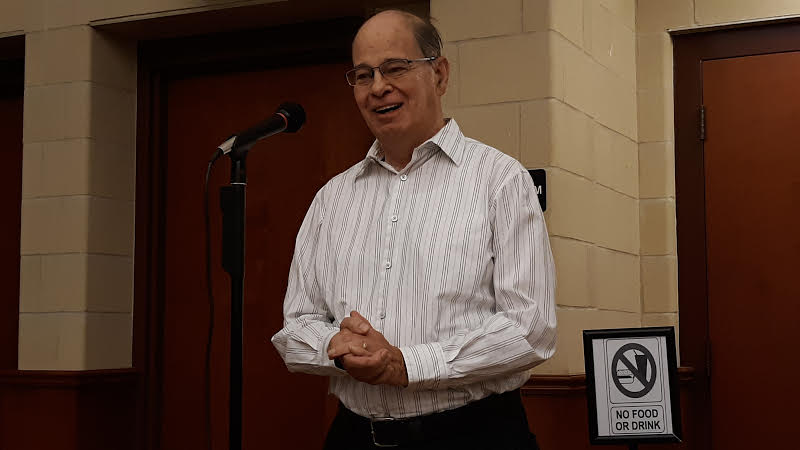
“I am for one school, one community,” Goyer said, noting that he saw a sign reading “Keep it Local” near Kenwood Elementary. “It certainly is local for them” but is it the best for the community, he questioned.
Is there an overcrowding problem in the elementaries?
Conneaut Elementary is using multiple modular units to house classrooms that don’t fit in the school building. But Richard Chamberlain said the district doesn’t have an overcrowding problem, just a balancing problem.
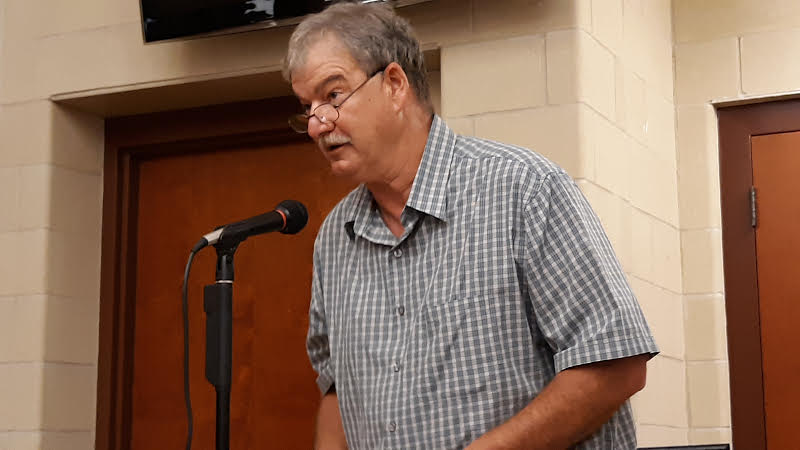
Based on his calculations, there is actually extra space in the schools – if students would just be dispersed differently between the three schools. Richard Chamberlain said if students were placed correctly, there would be three extra classrooms in Kenwood, seven extra in Crim, and two extra in Conneaut. He also said, based on his calculations, there are currently eight extra teachers.
Is the school board being honest with the public?
Richard Chamberlain accused the board of not being honest with voters that his bond issue does not include any improvements to the high school.
“There’s not going to be a change to the high school,” he said.
The high school was included in the first two bond issue attempts – but the combined $72 million price tag could not get voter approval. The board has been forthright that the new bond issue is only for an elementary.

But Grant Chamberlain accused the board of still not being transparent since they have not shared private emails about school issues. He said Tuesday’s meeting was more of a “pep rally” than board meeting, and he accused the board of wasting taxpayer money.
Grant Chamberlain, who is running for a seat on the school board, asked to debate the board. He was asked by Board of Education President Ginny Stewart to sit down.
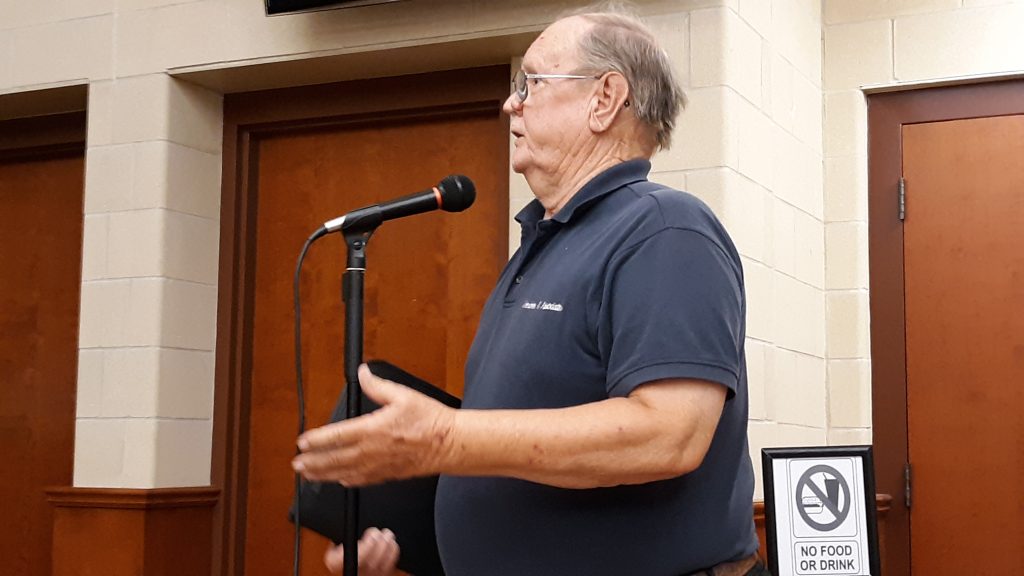
Citizen Bud Henschen blamed the board for the division in the community over the upcoming bond issue, and said the board wasn’t being honest about the high school and the decision to go with one elementary.
At that point, the board had enough of sitting quietly and listening to accusations.
“The board is honest,” said Bill Clifford, vice president of the board. “We had to make a decision,” and made it based on the facts presented.
Clifford said it’s fine to have different opinions, but the “vileness, the personal attacks,” were a step too far.
“As a board, I think we’re a very honest board – individually and collectively,” Clifford said. “We do what we think is best for the community.”
Board member Norm Geer acknowledged that he initially struggled with the idea of one elementary school.
“It was hard for me to leave the idea of neighborhood schools,” he said.
However, after seeing the success in other districts, Geer said he changed his mind.
“I was convinced the single building was best,” he said, since that gives the district the opportunity to educate “every single child the best that they can.”
“I made my own decision,” Geer said. “That’s my job, to do the right thing.”
Board member Paul Walker, who was the sole member to vote against putting the one elementary project on the ballot, said he based that vote on his belief that citizens would not support the project.
However, after reviewing Richard Chamberlain’s numbers showing the disparity in classroom numbers at the elementaries, Walker thanked him for proving that one elementary is the best way to go.
“If we can’t balance our classrooms, how are we going to educate our children properly,” Walker said.
Board member Jill Carr also defended the board’s integrity.
“This board is as transparent and honest as we can be,” she said. The decision to go with one elementary was made only after weighing all the data and research.
“Teaching methodologies are so different now,” Carr said. “This school will meet those. It will meet the needs of every child in this district.”
State report cards
Superintendent Francis Scruci voiced his displeasure with the state report card system, and with the grades given to Bowling Green City Schools.
“I have been and will continue to be the person who says these are the rules of the game and we will continue to play by them,” he said.
But the fact that 71 percent of the school districts in Ohio got a “F” for the “indicators met” category shows that the testing is flawed.
The testing is “biased against economically disadvantaged districts,” Scruci said.
“We own our results. Are we happy about our results? Nope,” he said, adding that the district will “absolutely” work to bring them up.
“We are a district that gives our students a quality education,” he said, noting the areas where Bowling Green students excel. “The report card doesn’t come remotely close” to telling the real story of the district, he said.
Ginny Stewart talked about the need for the community to show students that they value their education and are willing to invest in their schools. She worries about the message sent to students from the conflict over the bond issue.
“The constant battle about how much we believe in them and how much we value their learning environments,” is no doubt taking a toll, Stewart said.
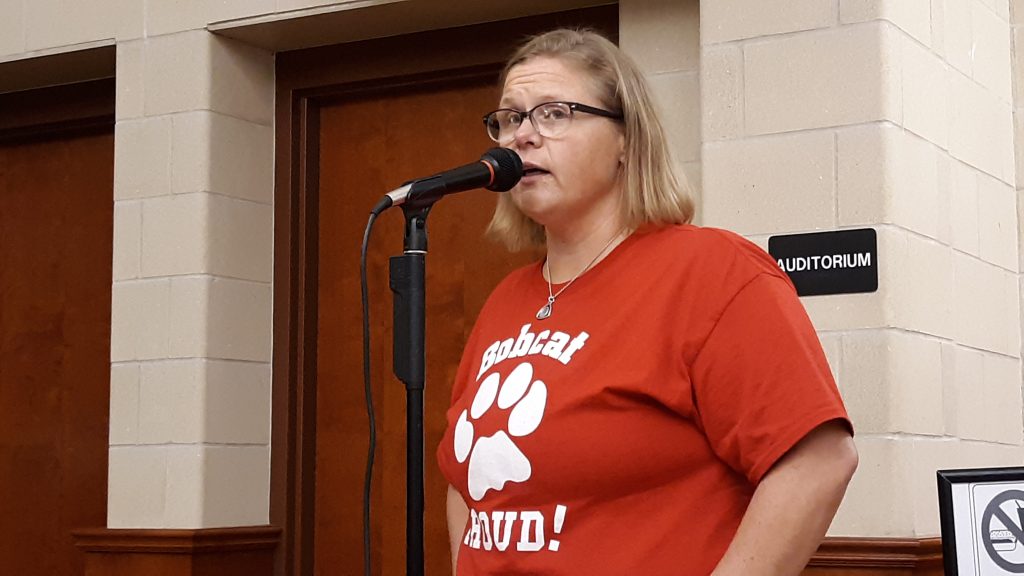
Tracy Hovest, a teacher in Washington Local Schools, agreed that the state report cards don’t paint an accurate picture of the district.
“The report cards do not show what you have done,” Hovest said.
And as far as the value of one consolidated school, Hovest said the district had to look no further than its middle school. The success of the middle school shows that placing grade levels and teachers together shows results.
“One community, one school,” she said.
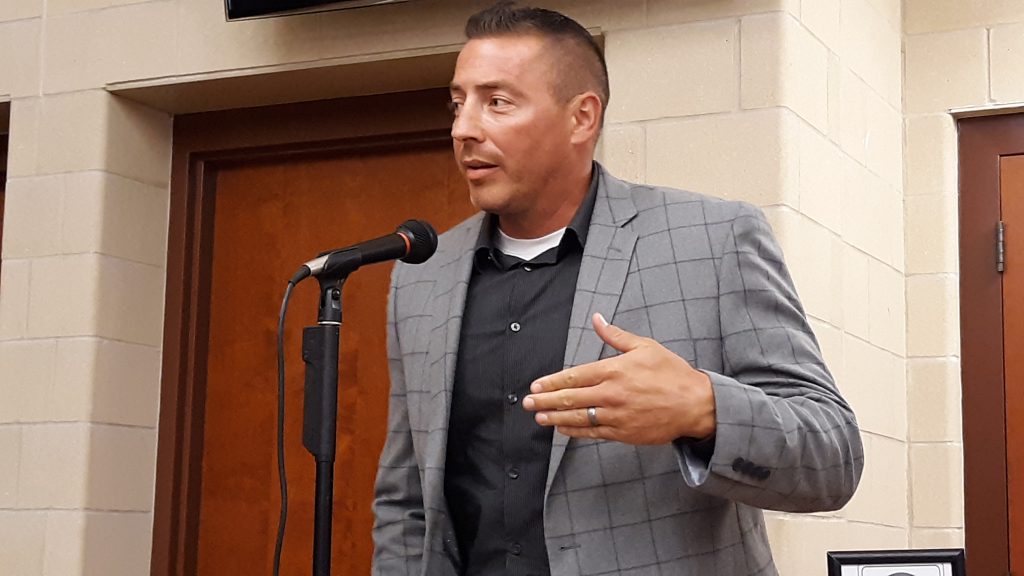
Ryan Myers, who has worked in education for 20 years, agreed that the grade cards aren’t a true representation. He wasn’t excusing the grades, but explaining the process.
“You see one grade and there are a whole lot of data points that go into that,” Myers said.
Safe Routes to School
Opponents of a single elementary have criticized the school district for not applying for grant funding from the ODOT program called Safe Routes to School.
Scruci said the City of Bowling Green is receptive to the safety needs of the schools. The city has widened and built new sidewalks, provides crossing guards, helps with Safety Town and bike safety programs, and provides an increased police presence in the schools.
Any application to the ODOT program for infrastructure funding must be made by the city. And since any school district looking to relocate schools is disqualified, city officials have indicated to Scruci that Safe Routes to School funding will be applied for once the bond issue passes.
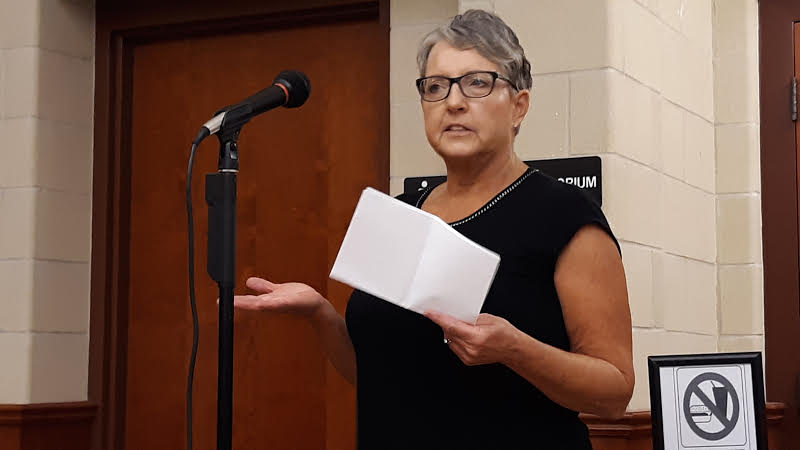
Irene Hinesman, a retired teacher, spoke in favor of the program, and voiced concerns about a poorly marked crosswalk at Lafayette and Poe Road.
Hinesman also said she objected to people in the community identifying those against the bond issue as the “anti-school group.” She said she was part of both task forces and attended board work sessions on the bond issue.


